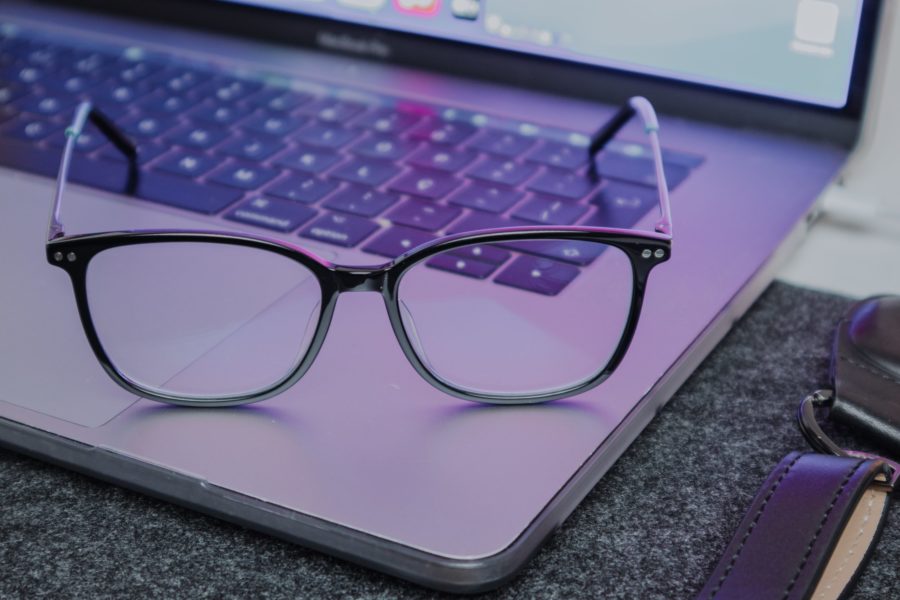Have you noticed more people wearing glasses? Don’t worry, it’s not because of a sudden mass decrease in eyesight quality. It’s because of blue light glasses – a new fad that is believed to save our eyes while we stare at our screens.
31% of US adults are online “almost constantly,” according to a 2021 Pew Research study.
Whether you’re scrolling through social media, doing work or watching TV, our eyes tend to be glued to our screens for a significant amount of time. Negative effects from too much screen time have led people to invest in a pair of blue light glasses.
What Is Blue Light?
Electronic devices emit blue light. This type of light has the most energy per photon of light compared to other visible light on the color spectrum, according to Harvard Health. Because blue light has more energy, it can be more damaging to our eyes in high enough doses.
Before you start to worry, the amount of blue light emitted from our devices is not enough to harm our retinas.
So … What’s The Point Of Blue Light Glasses?
Blue light glasses claim to reduce the negative effects from over-exposure to blue light emitted from devices such as phones, tablets and laptops. Some of these effects include headaches, eye strain and sleep cycle disruption.
However, the blue light from our screens has not been found to cause these symptoms, and blue light glasses have not been proven as a form of alleviation, according to the American Academy of Ophthalmology.
I’ll admit that I bought a pair of blue light glasses during the pandemic in 2020. My laptop usage increased dramatically during that time, and I started getting headaches from the blue light emitted from my screen (or so I thought). Even though it’s just the placebo effect, I haven’t gotten a headache ever since I started wearing them.
How To Ease Eye Strain
While blue light glasses are not proven to reduce eye strain because the blue light from our screens isn’t harmful to begin with (despite my vouch for them reducing my headaches), too much screen time can cause eye strain.
Excessive screen time can lead to decreased blinking, which may be the culprit causing eye strain.
If you experience eye strain from your devices, the American Academy of Ophthalmology recommends sitting arms-distance away from your computer screen and gazing slightly downward. Also, use the “20-20-20” rule: Every 20 minutes, move your eyes and look at something other than your screen that is at least 20 feet away. Do this for 20 seconds.
While blue light glasses have been found to be nothing more than a gimmick, managing your screen time is important. Set your devices down every so often to allow your eyes a chance to rest.
RELATED ARTICLES
Are Psychedelic Drugs the Medical Future?
Can COVID-19 Make You Lose Hair?
Pre And Post Workout Nutrition

